Description
I. Introduction
Definition of Pipeline pigging
Pipeline pigging refers to the process of using devices known as “pigs” to perform various maintenance operations within a pipeline. These operations can include cleaning the pipeline, inspecting its integrity, removing any built-up deposits, and maintaining the efficient flow of the product being transported.
Importance of pipeline pigging in the oil and gas industry
Pipeline pigging holds great importance in the oil and gas industry due to its role in maintaining the efficiency, safety, and longevity of pipelines. Pigging helps in removing debris, scale, and other unwanted deposits that accumulate over time, ensuring an unobstructed flow of oil or gas. Regular pigging inspections also provide crucial insights into the condition of the pipeline, helping to identify potential issues such as cracks, corrosion, or other anomalies that could lead to pipeline failure if left unaddressed. This proactive maintenance approach not only aids in preventing expensive downtime and catastrophic environmental incidents but also extends the operational life of the pipeline infrastructure. Consequently, pigging is a vital practice for any oil and gas operation that aims to maintain optimal pipeline performance, ensure environmental safety, and reduce operational costs.
II. Pipeline Pigging: Basics and Types
Mechanical Pig
Mechanical Cleaning Pigs with Cups:
EMT’s mechanical cleaning pigs with cups are engineered with a steel frame and 2-4 or more sealed cups, with an optional electronic positioning transmitter. These pigs are proficient in removing pipeline debris like stones, wood bars, etc., and are utilized in pre-production pigging, nitrogen replacement, water pressure testing, and drainage, among others. They are compatible with various mediums, including raw oil, product oil, edible oil, natural gas, LNG, chemical materials, coal water slurry, sewage, and running water. Their effective sealing properties and operating distance of 100-150 miles make them a reliable choice for diverse pipeline cleaning requirements.
Mechanical Cleaning Pigs with Discs:
The mechanical cleaning pigs with discs from EMT feature a steel frame, 2 guide discs, 4-6 sealing discs, and an electronic positioning transmitter. Designed for pipeline cleaning, water discharge, water blocking, dielectric isolation, and river applications, they effectively remove scale, wax, and deposits from pipelines. They operate bidirectionally, offering flexibility in cleaning operations, and can handle various mediums, including crude oil, product oil, edible oil, natural gas, LNG, chemical materials, coal water slurry, sewage, and running water.
Foam Pigs
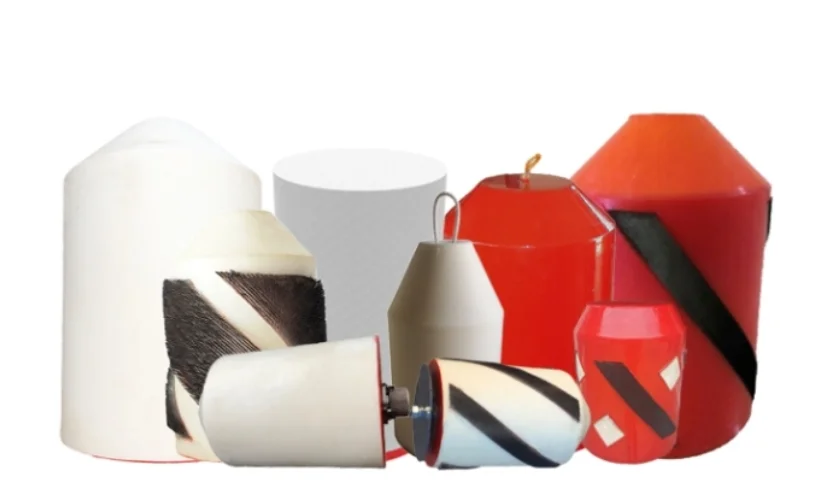
Foam pigs, available in varying densities and designs, offer versatile and cost-effective solutions for pipeline cleaning. The basic type, the Bare Foam Pig, is made of a sponge-like material and can deform up to 60% to navigate small radius curvatures. It excels in sweeping, dewatering, and drying pipelines. Another type, the Criss-cross Foam Pig with Brush, is designed to remove stubborn dirt and deposits, making it suitable for early cleaning treatments.
The Heavy Density PU Fully Coated Polly Scraper Foam Pig With Spiral Wire Brushes offers enhanced cleaning performance for rust and sludge removal in long-distance pipelines, thanks to its spiral wire brushes. Lastly, the Medium Density Polyurethane Bare Polly Foam Pipeline Pig Swab with Brushes combines the benefits of bare foam pigs with added brushes for better cleaning effectiveness.
These foam pigs share several advantages, including their light and flexible design, accurate location tracking, high wear resistance, effective cleaning performance, and cost-efficiency. These features make foam pigs an invaluable tool for pipeline maintenance.
Spherical Pigs
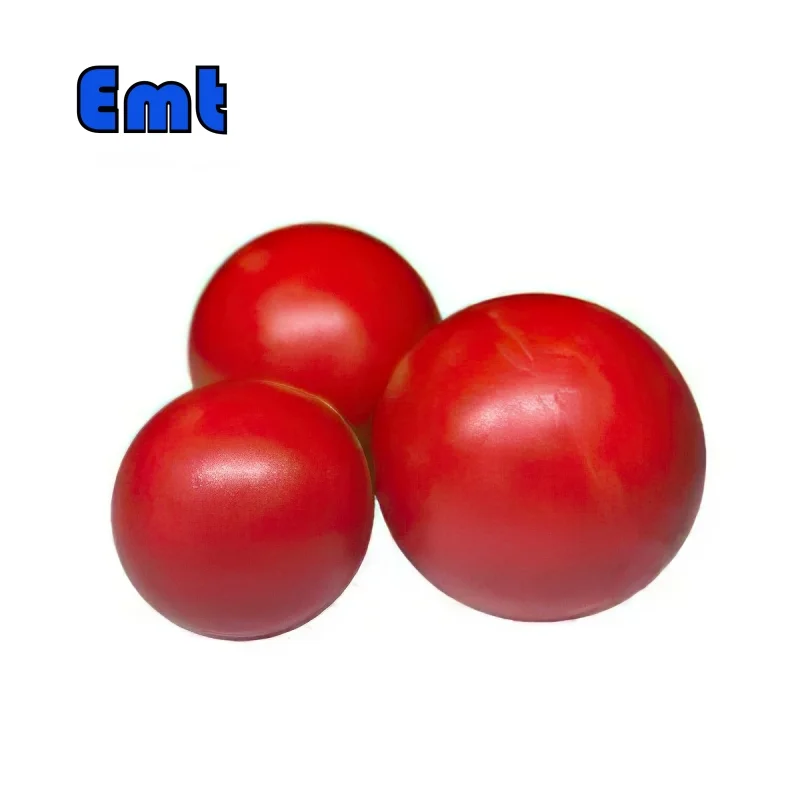
Spherical pigs, which are hollow round balls typically made from materials like polyurethane or rubber, have re-emerged as valuable tools in natural gas pipelines. They were originally used to remove liquids like water and condensates but declined in use due to regulatory changes and the installation of liquid-separation equipment. However, the resurgence of spherical pigs is driven by the need to remove liquids from rich-gas gathering systems in shale plays.
These spherical pigs can be inflated and are equipped with inflation valves, making them effective at displacing liquids within pipelines. They are known for their ability to roll into launch positions, allowing multiple pigs to be loaded and released automatically using launch pins. This automation reduces manpower, lowers costs, and minimizes gas release.
Non-inflatable spherical pigs are also available and are better suited for low-flow conditions due to their flexibility. However, spherical pigs have limitations, such as their round shape and weight when filled with liquid, requiring special handling equipment.
Solid Cast Pigs
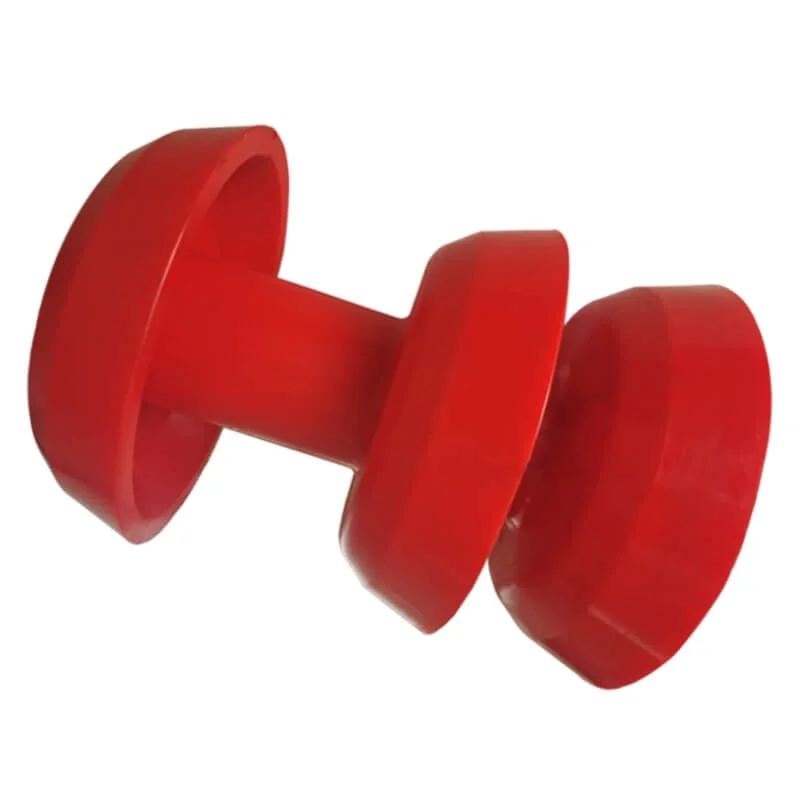
Solid cast pigs are specifically designed for pipeline maintenance, delivering excellent cleaning performance due to their durable polyurethane composition. These tools, which lack a skeleton, are capable of efficiently cleaning and descaling pipelines of varying sizes and irregularities, thanks to their solid construction. Their application is diverse, extending to pipelines carrying water, gas, oil, and chemical reagents. Their robust and flexible design facilitates easy navigation through pipelines, thereby ensuring pipeline integrity. Be it debris, scale, or any other build-up, solid cast pigs are a dependable and effective choice for pipeline cleaning.
These maintenance tools are made from superior polyurethane, a material recognized for its resilience and durability. The solid cast pigs’ robust build allows them to endure the harsh conditions within pipelines, including high pressures, abrasive materials, and corrosive substances. The polyurethane material strikes a perfect balance between rigidity and flexibility, enabling these tools to perform reliably even under challenging circumstances.
III. How Pipeline Pigging Works
Pipeline pigging is a process where a device, called a ‘pig’, is sent through a pipeline to perform various cleaning, inspection, or maintenance tasks. The pig is inserted into a launch station and moved through the pipe by the flow of a fluid or gas.
Propulsion Mechanism
The propulsion mechanism refers to the driving force that moves the pig through the pipeline. This is typically the pressure of the fluid or gas being transported in the pipeline. The pig gets propelled forward by this pressure as it travels from the high-pressure area to the low-pressure area.
Differential Pressure (dP)
Differential pressure is the force that drives the pig through the pipeline. It’s the difference between the upstream pressure (where the pig is launched) and the downstream pressure (where the pig is received). The pig moves from the area of higher pressure to the area of lower pressure.
Back Pressure (BP)
Back Pressure is the pressure resistance that a pig experiences from the downstream side of the pipeline. It’s important to maintain a certain level of back pressure to control the speed of the pig and ensure it doesn’t move too rapidly, which could cause damage.
PIG Speed Excursion
PIG speed excursion refers to the variance in the speed of the pig as it travels through the pipeline. Factors such as pipeline diameter, pig design, fluid viscosity, and pressure differentials can affect the speed of the pig.
Launchers and Receivers
Launchers and Receivers are the starting and ending points for pigging operations. A launcher injects the pig into the pipeline, and the receiver retrieves it at the end of its journey. They are designed to safely and efficiently handle the pig before and after the pigging operation.
Pipeline Cleaning and Maintenance
Pipeline pigging plays a crucial role in cleaning and maintaining pipelines. Pigs remove debris and deposits, helping to prevent blockages and maintain the optimal flow of the pipeline’s contents.
Pipeline Inspection and Integrity Management
In addition to cleaning, pigging is also used for pipeline inspection and integrity management. Inspection pigs, also known as ‘smart pigs,’ are equipped with sensors and detectors to identify issues such as corrosion, cracks, or anomalies in the pipeline wall, helping to ensure the pipeline’s safety and longevity.
IV. Applications and Significance of Pigging
Pipeline Cleaning
Pigging is widely used for pipeline cleaning, where pigs are sent through the pipeline to remove debris, sediment, and other deposits that may obstruct the flow or cause corrosion. This helps maintain pipeline efficiency and longevity.
Pre-commissioning Cleaning
Before a pipeline is put into service (pre-commissioning), it undergoes a thorough cleaning to remove construction debris, mill scale, and rust. Pigging is a common method for this initial cleaning, ensuring the pipeline is ready for safe and efficient operation.
Maintenance and Repair
Pigging is crucial for regular maintenance and repair of pipelines. It helps detect early signs of damage or corrosion, enabling proactive repairs. This helps avoid catastrophic failures and maintains the operational efficiency of the pipeline.
Gauging for Internal Bore Restrictions
Pigging is used in gauging operations to detect internal bore restrictions. Gauging pigs, designed to match the pipeline’s minimal internal diameter, are used to identify any obstructions or dimensional anomalies within the pipeline.
Pipeline Drying and Dewatering
After hydro testing or any operation involving water, pigging is used to dry and dewater the pipeline. Foam pigs are typically used for this purpose, as they have excellent water absorption capabilities.
Pipeline Inspection for Integrity
Inspection or ‘smart’ pigs are used for pipeline integrity management. Equipped with sensors and detectors, these pigs detect pipeline anomalies such as cracks, corrosion, or wall thinning. This allows for early detection and repair, ensuring pipeline safety and reliability.
Use in Different Pipeline Activities
Beyond the applications mentioned above, pigging is used in various pipeline activities including product separation, displacement of one product with another, and batching. Its versatility makes pigging a crucial component in the operation and maintenance of pipelines.
V. Conclusion
- Recap of the importance and versatility of pipeline pigging
Pipeline pigging plays a vital role in various aspects of pipeline operations and maintenance. It is fundamental for cleaning pipelines, both during pre-commissioning and regular maintenance, to ensure optimal flow and prevent corrosion. Pigging helps in the early detection of damage, enabling proactive repairs for maintaining pipeline integrity. It aids in identifying internal bore restrictions, ensuring efficient pipeline operations. Pigging is also used for drying and dewatering pipelines post-water-involved operations. With ‘smart’ pigs, it extends to inspecting pipelines for potential anomalies. Hence, the importance and versatility of pigging in pipeline management are significant, contributing to operational efficiency, safety, and cost-effectiveness.
- The role of pigging in ensuring pipeline safety and efficiency
Pigging plays a crucial role in ensuring the safety and efficiency of pipeline operations. By cleaning the pipeline, pigging helps maintain optimal flow and prevents blockages, thereby improving efficiency and reducing the risk of disruptive and potentially dangerous ruptures. In terms of safety, ‘smart’ pigs are used for pipeline inspections, detecting early signs of damage such as corrosion, cracks, or wall thinning. This allows for timely repairs, preventing severe failures and ensuring the pipeline’s safety and longevity. Furthermore, pigging aids in managing pipeline integrity by identifying internal bore restrictions and dewatering pipelines after operations involving water. Therefore, pigging is an essential process that significantly contributes to both the safety and efficiency of pipeline operations.
- Closing thoughts on the significance of routine maintenance and inspection in the oil and gas industry.
Routine maintenance and inspection play an indispensable role in the oil and gas industry. These processes not only ensure the operational efficiency and longevity of crucial infrastructure but also safeguard against potential hazards and costly shutdowns. Regular maintenance, including activities like pigging, helps maintain optimum flow rates, prevent blockages, and mitigate corrosive damage. Inspections, particularly using ‘smart’ pigs, enable early detection of anomalies or signs of damage, allowing for timely repairs and preventing catastrophic failures. As the industry continues to operate in increasingly challenging environments, the importance of routine maintenance and inspection becomes even more paramount. It’s through these proactive measures that the industry can guarantee safety, maintain productivity, and uphold environmental standards, ultimately contributing to its long-term sustainability and profitability.

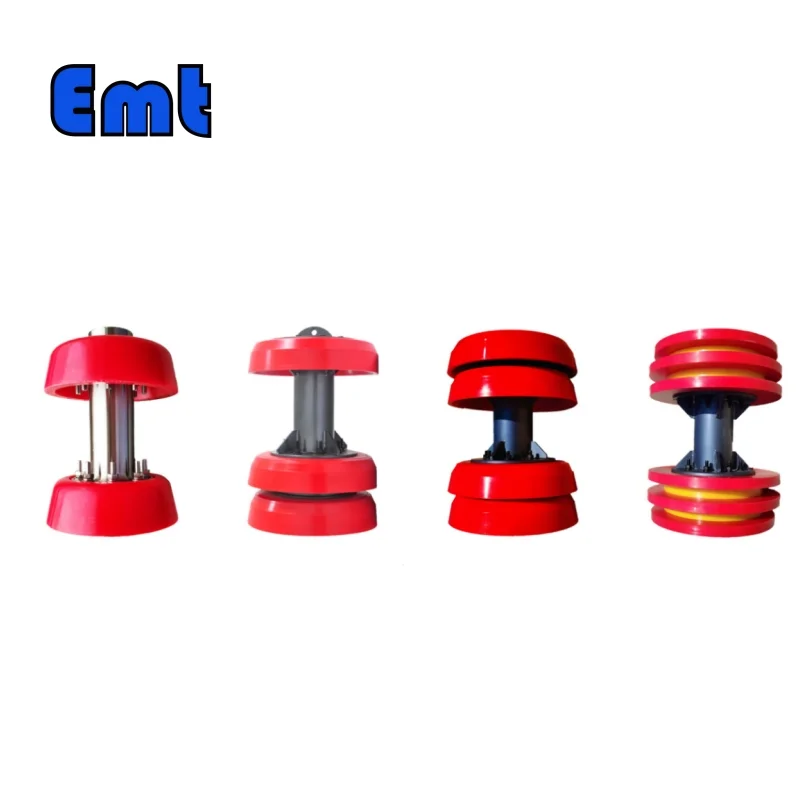
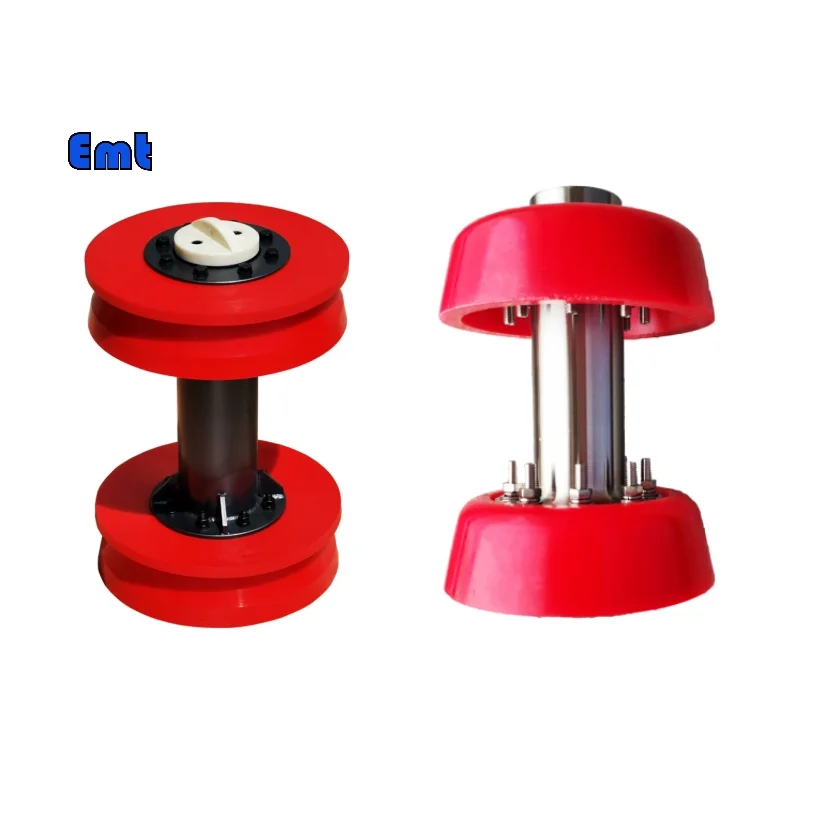
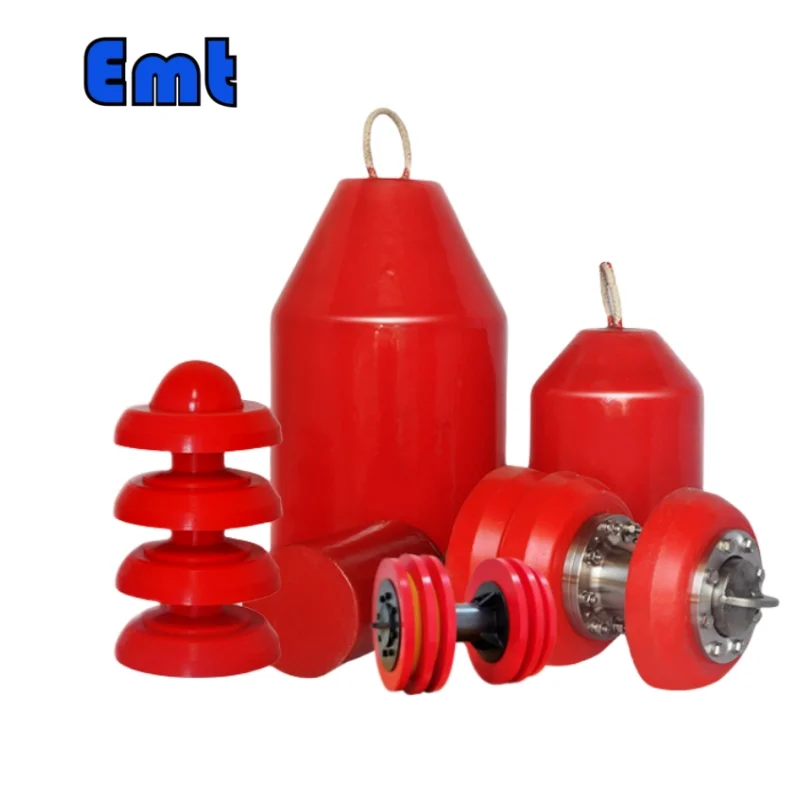
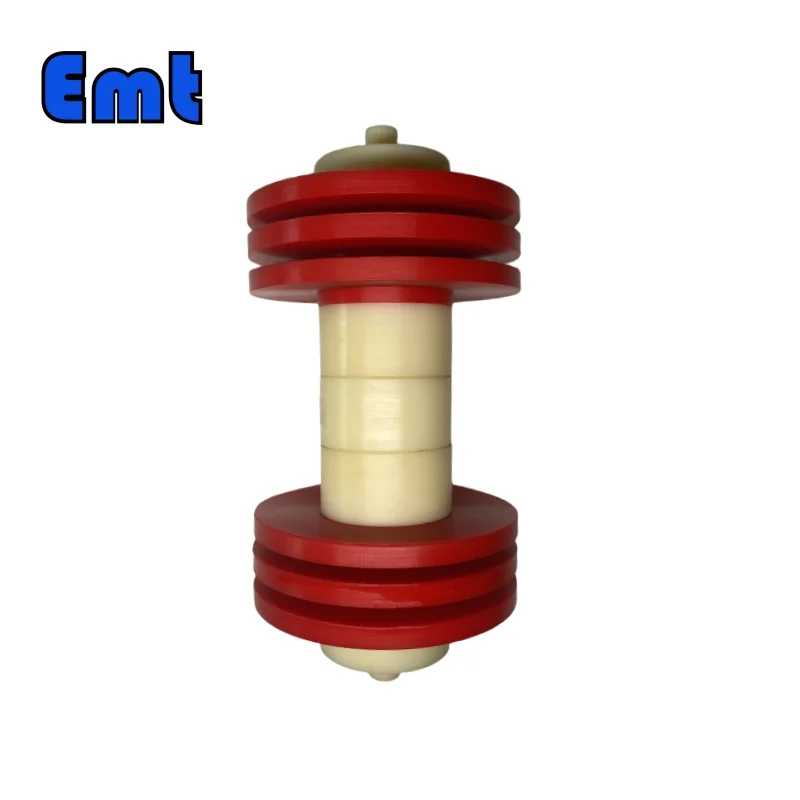
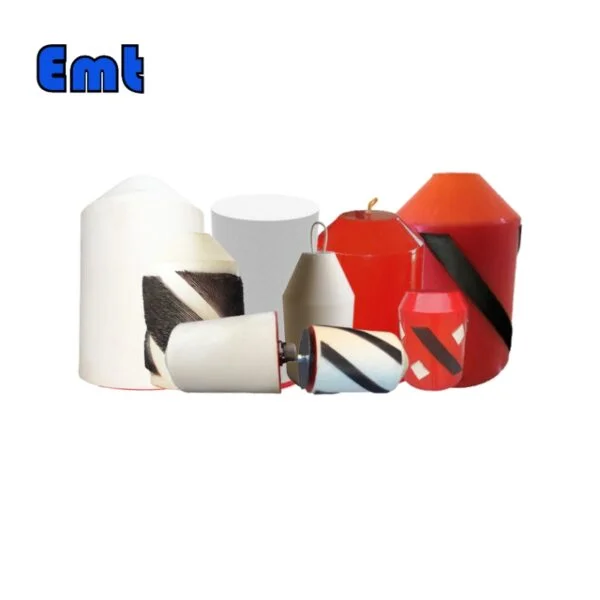
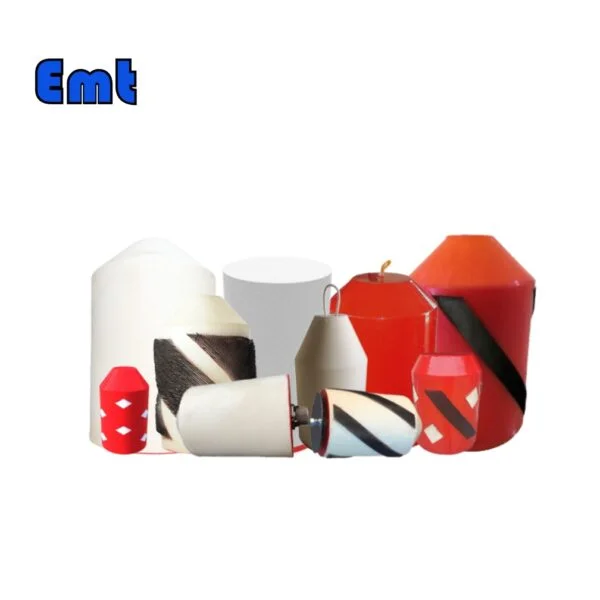
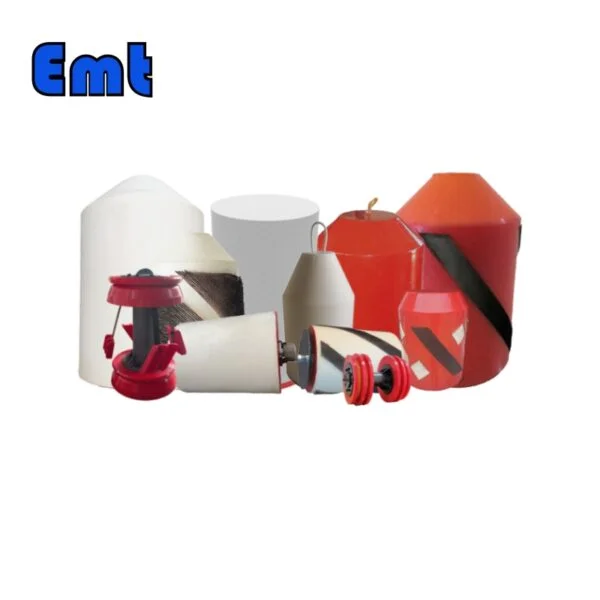
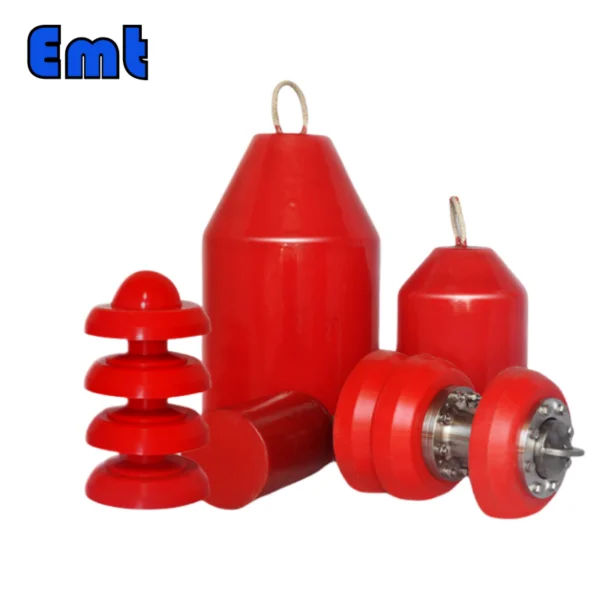
Reviews
There are no reviews yet.